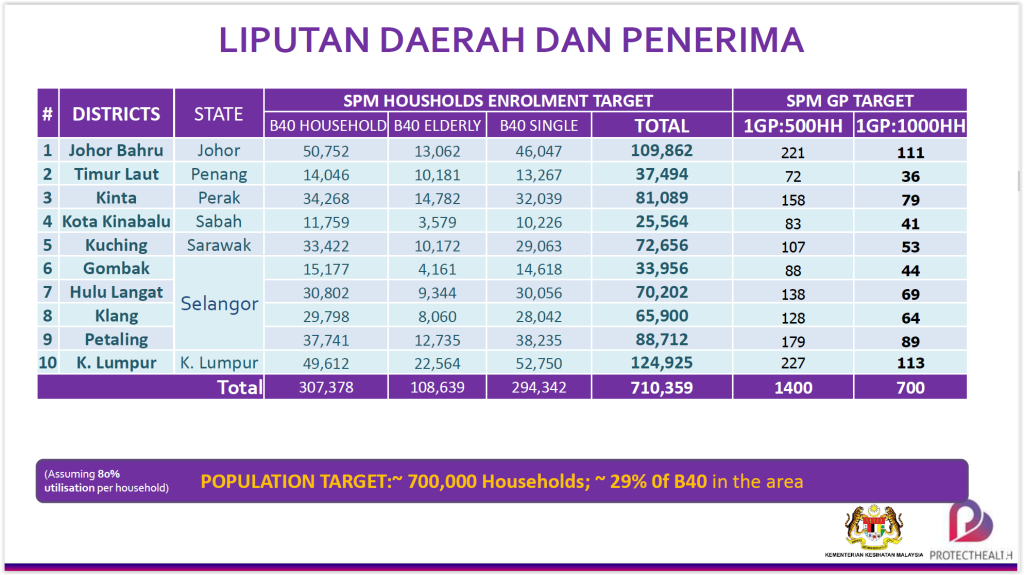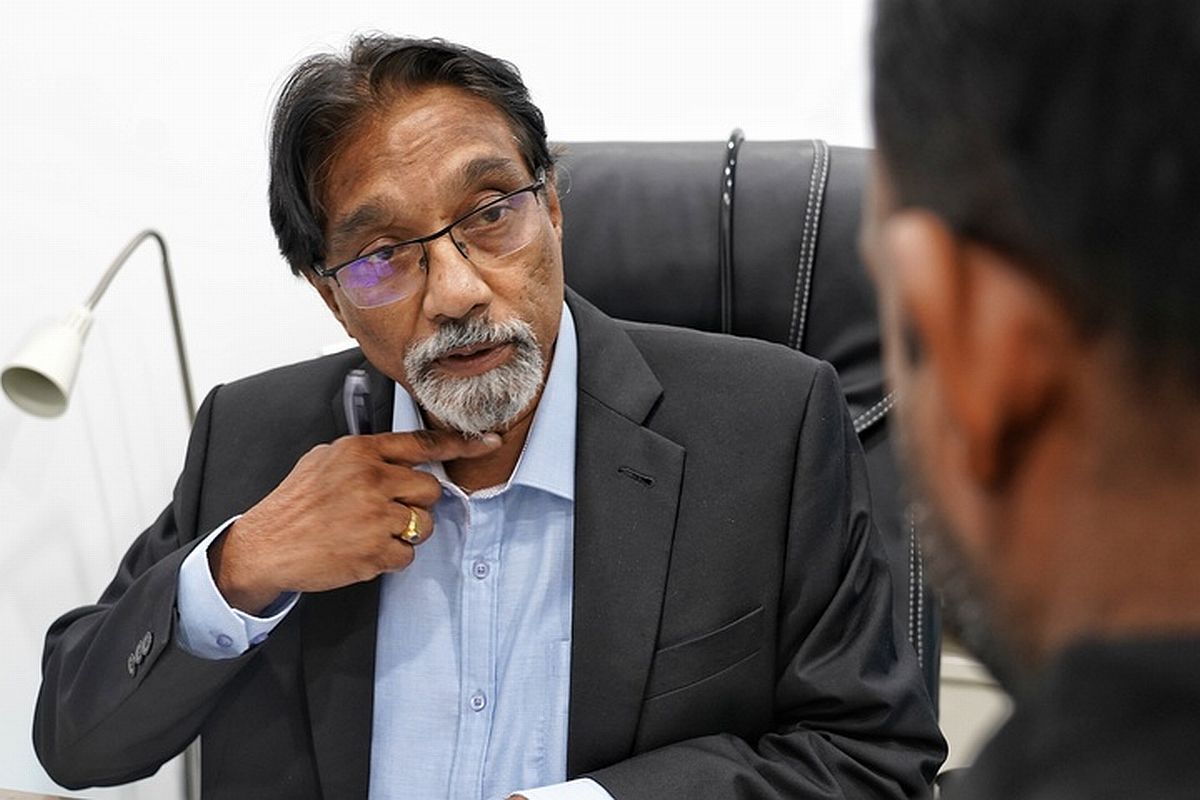KUALA LUMPUR, Sept 5 — The Federation of Private Medical Practitioners’ Associations, Malaysia (FPMPAM) has questioned the practicality of the Madani Medical Scheme’s (SPM) monthly estimate of 1,000 patients per panel clinic.
The target by ProtectHealth Corporation Sdn Bhd, a company fully owned by the Ministry of Health (MOH), translates to 50 patients – under the scheme alone – a day for 20 days a month, assuming that the general practitioner (GP) clinic does not operate on weekends, unless these facilities have locums.
FPMPAM president Dr Shanmuganathan Ganeson, who runs a practice in Bukit Bintang’s central business district, said that he sees an average of 30 patients a day. He works from 9am to 5pm on weekdays, and half-day on Saturday from 9am to 1pm.
This means that Dr Shanmuganathan would only see approximately 150 patients a week, excluding the number of patients he sees on Saturdays. Thus, in a four-week month with no public holidays, he would only see approximately 600 patients.
“Even in B40 areas, especially rural, in East Malaysia, in northern and East first states, it is a lofty target. In urban areas, unlikely,” he told CodeBlue.
Dr Shanmuganathan said that his friend, who practises in Klang, sees 60 to 100 patients a day. His friend’s GP clinic, which is run by two doctors, operates from 9am to 9pm daily and is closed on Sundays and some public holidays.
Applying the same calculation, Dr Shanmuganathan’s friend would see approximately 360 to 600 patients a week; in a month, he would see 1,440 to 2,400 patients.
Thus, on paper, ProtectHealth’s monthly target of 1,000 SPM patients might be achievable – for group practices at least. But this depends on whether enough people from the target low-income groups know about the scheme and also whether panel clinics would prioritise SPM patients over their own regular paying patients, based on staffing constraints.
ProtectHealth also estimated RM15,000 monthly revenue from SPM per panel clinic, equating to just RM15 per patient, based on its monthly projection of 1,000 patients per clinic.
Overall, ProtectHealth estimated 1.5 million visits for this year under SPM, based on projections of 1,000 patients per clinic per month and 1,000 panel GPs.

The estimated earnings of RM15 per patient are low for GPs, and Dr Shanmuganathan criticised the consultation fees paid to doctors under this programme, dubbing them “insultation fees.”
This is because the fees paid to doctors are based on the RM10-RM35 rate from the 2006 Schedule 7 of the Private Healthcare Facilities and Services Act (PHFSA) 1998, which, in turn, is based on the 1992 rate recommended by the Malaysian Medical Association (MMA).
A 2013 amendment was made to Schedule 7, which raised GPs’ fees to a new range of RM30 to RM125, but it has never been gazetted.
The FPMPAM, the Medical Practitioners Coalition Association of Malaysia (MPCAM), the Organisation of Malaysian Muslim Doctors (Perdim), and the Malaysian Medical Association (MMA) requested a RM50 consultation fee under SPM in a meeting with ProtectHealth last May, before the programme’s launch in June, according to FPMPAM.
Furthermore, Dr Soo Tai Kang, president of the MPCAM, expects that doctors enrolled in the scheme will incur some losses when it comes to medication prescribed to patients.
ProtectHealth’s list of set medication prices for SPM includes some drugs reimbursed below market prices, forcing doctors to cover the cost difference between purchase price and reimbursement.
ProtectHealth’s 700,000 Household Target Actually For 10 Districts

According to ProtectHealth’s July 24 slides on SPM, the company’s target of about 700,000 low-income households benefiting from the scheme was actually based on 10 districts, as per the June 15 launch of the pilot phase of the scheme, and not nationwide.
The enrolment target for the 10 districts in Kuala Lumpur, Selangor, Johor, Penang, Perak, Sabah, and Sarawak are: 307,378 B40 households, 108,639 B40 elderly, and 294,342 B40 singles, totalling 710,359.
SPM’s GP targets for these 10 districts are 1,400 (for one GP per 500 households) and 700 (one GP per 1,000 households).
ProtectHealth’s slide stated that the population target was about 700,000 households estimated to comprise about 29 per cent of the B40 in the area, assuming 80 per cent utilisation of SPM per household.
Yet, in just two months, SPM was expanded on August 17 to four more districts in Kedah and Terengganu, and another seven districts in Kelantan, Pahang, Melaka, Negeri Sembilan, Penang, and Perlis a week later on August 25, totalling 21 districts where SPM is available.
ProtectHealth even said in a press release that SPM would be expanded nationwide next month.
The company was only allocated RM100 million by the federal government for this nationwide programme.
This amount is lower than the RM125 million the Selangor government allocated to its Skim Peduli Sihat (SPS) – a similar scheme – during its 2016 launch.
At the time of its launch, the SPS was limited to state residents. In 2023, the programme awarded as much as RM500 per year for families and RM250 for individuals under the scheme. Patients are limited to RM70 per visit.
In its August 17 release, ProtectHealth said over 750 private clinics have registered to empanel with SPM, besides claiming last August 3 that more than 28,000 B40 households have obtained treatment under the scheme.
It is unclear how panel clinics or ProtectHealth identifies a patient seeking treatment under SPM as belonging to a household (subject to RM250 limit per household) or if the patient is registered with the scheme as a single (with an RM75 limit), since potential beneficiaries only need to show their MyKad during their visit to a panel clinic. (Household members may have different addresses stated on their identity card).
ProtectHealth did not provide SPM medical cards per target household. An RM250 limit per household means that one household member in a family of four or five (however that household member is identified) is only eligible for a maximum RM62.50 or RM50 benefit, lower than the RM75 limit if one were to seek treatment as a single.

From June 15 to December 31, 2023, the SPM benefit limit supports treatment for acute conditions at private GP clinics for eligible beneficiaries and Sumbangan Tunai Rahmah recipients. Under the scheme, households are entitled to RM250 per household, senior citizens aged 60 and above are entitled to RM125, and singles are given RM75.
Beneficiaries have access to treatments in three categories. The first is combined consultation and medication with a limit of RM60 per visit. This category covers conditions like cough, cold, diarrhoea, vomiting, sprains, strains, headache, and mild trauma. Services excluded from coverage are routine vaccination, health screening, follow-ups for chronic disease, and family planning, among others.
The second category is investigation (point-of-care testing (POCT) or diagnostic procedures) that is capped at RM50 per visit and covers 12 types of tests: full blood count, urine tests (including drug abuse tests), dengue tests, Covid-19 tests, HIV tests, glucometer, electrocardiogram, X-rays, pelvis ultrasound for obstetrics and gynaecology emergencies, speculum examinations, and proctoscopy examinations.
The final category is therapeutic procedures (excluding basic life support that is reimbursed as per service item without a maximum limit per visit) that is also limited to RM50 per visit. Patients can use the scheme for the following procedures: nebulisation, compression and bandaging for a haemorrhage, immobilisation bandaging, simple wound dressing, wound cleaning and closure, opening of sutures, foreign body examination and straining of the eye, eye irrigation, removal of foreign body, removal of nail under local anaesthesia, evacuation of nail trephination for subungual hematoma, urinary catheterisation and insertion of intravenous cannula and/or Intravenous infusion, initiation.
This is the fourth part of CodeBlue’s series on SPM:








